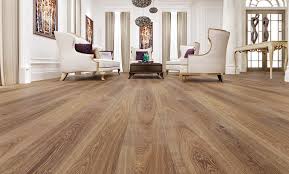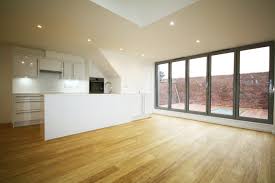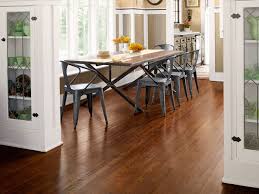Factors To Consider When Buying Hardwood Floor
Buying a hardwood floor is a lifetime investment. You will want to make sure you get the right one for your home. Here are our top 10 things to consider when buying hardwood flooring:
- Where is the floor going?
This is really important because you will want to think about the colour scheme and style of the room where the floor is going. Hardwood flooring is versatile and can be fitted into almost any room in your home. However, if you want a wooden floor for a conservatory or room with large amounts of glazing, then you should choose engineered hardwood flooring. This is because it is more stable and can cope with the constant changes in humidity and temperature.
- What type of subfloor do you have?
The type of subfloor can sometimes determine which type of wooden flooring you will need. Usually you can install any type of floor over most subfloors. Just be careful if you want to install over joists. Your flooring must be at least 18mm thick. Have a look at the following article for further advice: Fitting wood flooring to different subfloors.
- Do you have underfloor heating?
If you have underfloor heating then you must use engineered wood flooring. Since engineered wood flooring planks are made up of multiple layers they are dimensionally stable. As a result, they can withstand the continual changes in temperature.
- How busy is the area?
This is an especially relevant point to think about. The amount of footfall there is likely to be in the room should be thoroughly considered. If it is a busy area, like a hallway or living space, we would recommend a durable floor like Oak or even Strand Woven Bamboo.
- Do you have a budget?
If you have a budget, there are a few things that you may want to consider:
The prices of hardwood flooring can greatly vary depending upon the size of the plank, species of wood and whether you choose engineered or solid wood.
Generally, wider and longer planks of hardwood flooring are more expensive.
The thickness of the floor can also affect the cost, with thicker planks being more expensive.
Solid wood flooring is usually far more expensive than engineered wood. This is a result of more hardwood being used to create the planks of flooring.
The species of wood should also be considered. Prices depend of the rarity of the species of wood. For example, Oak flooring is reasonably priced because it is a common wood to use for flooring, whereas Walnut, which is far rarer, is slightly more expensive.
- What colour flooring are you looking for?
The colour of your floor usually depends on personal preference. You should be mindful of the surrounding area though. Think about the colour scheme and existing décor. A light coloured floor can help to brighten up a dark or small area. Dark wooden floors look fantastic in traditional style homes with lots of space and high ceilings. Alternatively, a grey wooden floor will create a fresh and minimalist atmosphere to almost any space.
- What style of flooring do you like?
Wood flooring is available in two main styles: plank flooring and parquet block flooring. Plank flooring is the traditional planks of wooden floor. You can get varying widths and lengths of plank, depending on what you would prefer. Alternatively, you could opt for parquet block flooring. The smaller blocks of wood allow you to create beautiful geometric patterns.

Engineered Hardwood Vs Solid Hardwood Flooring
Whether to buy solid or engineered hardwood floor depends on the room where you are installing the floor. For rooms that are prone to moisture like a basement or kitchen, you should install engineered hardwood floor. You can pre-finish solid hardwood floors multiple times depending on its thickness, which make them more durable than engineered hardwood floors.
Solid Hardwood Flooring
Solid hardwood floors are a single piece of hardwood consisting of planks or strips. There are three types of solid hardwood floors, namely strip, plank, and solid parquet hardwood flooring. Strip hardwoods are narrow and are usually less than 3 inches wide. Plank hardwoods are wide and are more than 3 inches wide. We also have parquet floors which are floors made in decorative geometric patterns. Strip floors are much cheaper but less dense than plank hardwoods.
Engineered Hardwood Flooring
What is engineered hardwood flooring? Engineered hardwood floors have multiple layers of wood with a hardwood on top and a plywood at the bottom. Usually, the top layer is 100% hardwood, therefore, natural. The engineered hardwood floor thickness will determine how many times you can pre-finish it but it is usually 2-3 times. This is because most engineered hardwood floors have a thin top hardwood layer. As such, they cannot be pre-finished multiple times like solid hardwood floors.

Does The Room Contain A Door To The Outside?
If the room contains a door to the outside, dirt and other debris will make its way into the room, scratching the surface of the flooring and making it show wear and tear much sooner than other rooms without a door to the outside. Be sure to use non-staining rugs and doormats in the room to lessen the chance of damaging debris being strewn throughout the room.
What is the “feel” of the room? There are several potential “feels” one can create for a room. If the room is casual, certain hardwood choices and grades will be better than others, and the same is true if the room has a more formal feel to it. Two examples of different styles are smooth, elegant select and better grade versus a hand scraped, more antique look. This, in combination with the colors and styles, will help make a final hardwood choice.

How Do You Keep Hardwood Flooring Looking New?
To keep your floors looking fresh, be sure to clean them regularly. You can do this by simply sweeping, dust mopping or vacuuming the floors. Don’t use steam mops or wet mops on your wood floors because steam and water can make the finish dull or damage the floor long term. Also, it wouldn’t hurt to place a throw rug at each entrance. But avoid rugs that have rubber backs, as they can discolor your floors.
How Can You Prevent Wood Floors from Fading Over Time?
Wood flooring is a lot like fine wine-it becomes better with age. Of course, like any natural thing that experiences changes over time, your flooring can also experience minor color changes due to factors such as sun exposure. To keep your floors from fading, try to periodically move furniture and rugs to limit their exposure to sunshine.
What About Pets-Could They Scratch Wood Flooring, and How Can You Prevent This?
You can take a couple of steps to keep your pets from scratching your wooden flooring. For example, you can trim your furry friends’ nails regularly. You can also put rugs on the floors to reduce the number of scratches that end up in the flooring’s finish.
Steps to Recoating Wood Floors
Empty the room
Don’t attempt to convince yourself you can complete this project by moving furniture around the work area. The room needs to be completely empty—and don’t wait until you bring the floor buffer home. You’ll be paying for it by the hour, so empty the room first.
Make any necessary repairs
This is the time to countersink and fill any exposed nail heads, to plug holes left from old television or phone lines, or to touch up any deep scratches with a wood stain or stain marker.
Clean the floor
In order for a new finish to adhere to an existing finish, any contaminants on the existing finish must first be removed—including, but not limited to, ordinary dirt, grime, grease, dust, soap film, cleaning residue, dusting oils or aerosols, furniture or floor polish, and wax.
Don’t clean with hot, soapy water or any homemade recipes. Harsh chemicals can damage the finish on your floor and baseboards, soap will leave a residue, and excessive water will cause the wood to swell. Instead, use a commercial hardwood floor cleaner designed to dissolve contaminants without dissolving the existing finish. Afterward, scrape the finish with your fingernail to determine if the surface is completely clean.
Allow the floor to dry
After cleaning, wipe the floor with a soft, dry cloth, and give any remaining hardwood floor cleaner time to evaporate before proceeding. If you are in a hurry, set up a fan to blow air across the floor.
Gently scuff the old finish
Since neither water-based nor oil-based finishes can form a chemical bond with a previous layer of finish, we have to create a mechanical bond between the two finishes by adding thousands of tiny scratches to the existing finish.
Using either a floor polisher and a large synthetic pad, a hand polisher with a synthetic pad, or a palm or orbital sander with 180-grit sandpaper, lightly scuff the surface of the existing finish.
Vacuum the dust
Use the soft bristle attachment on a vacuum to remove the dust created by scuffing. Do not sweep the floor, as a broom or dust mop only pushes the grit into the cracks between the boards.
Apply your chosen finish
Choosing the appropriate finish is critical, but regardless of the type of finish you apply, remember that there is a difference between “dry time” and “cure time.” A finish may dry in a matter of minutes, but it will not achieve its maximum hardness until it has had time to cure—typically in about a week.
Once dry, you can walk on the floor in stocking feet, but keep shoes and pets off it for an additional day. If possible, wait three days before bringing in rugs and furniture. And regardless of how long the finish has cured, never slide furniture across a hardwood floor. A worn furniture glide or even a piece of dirt wedged under a chair leg can leave an unsightly scratch in even the strongest finish.